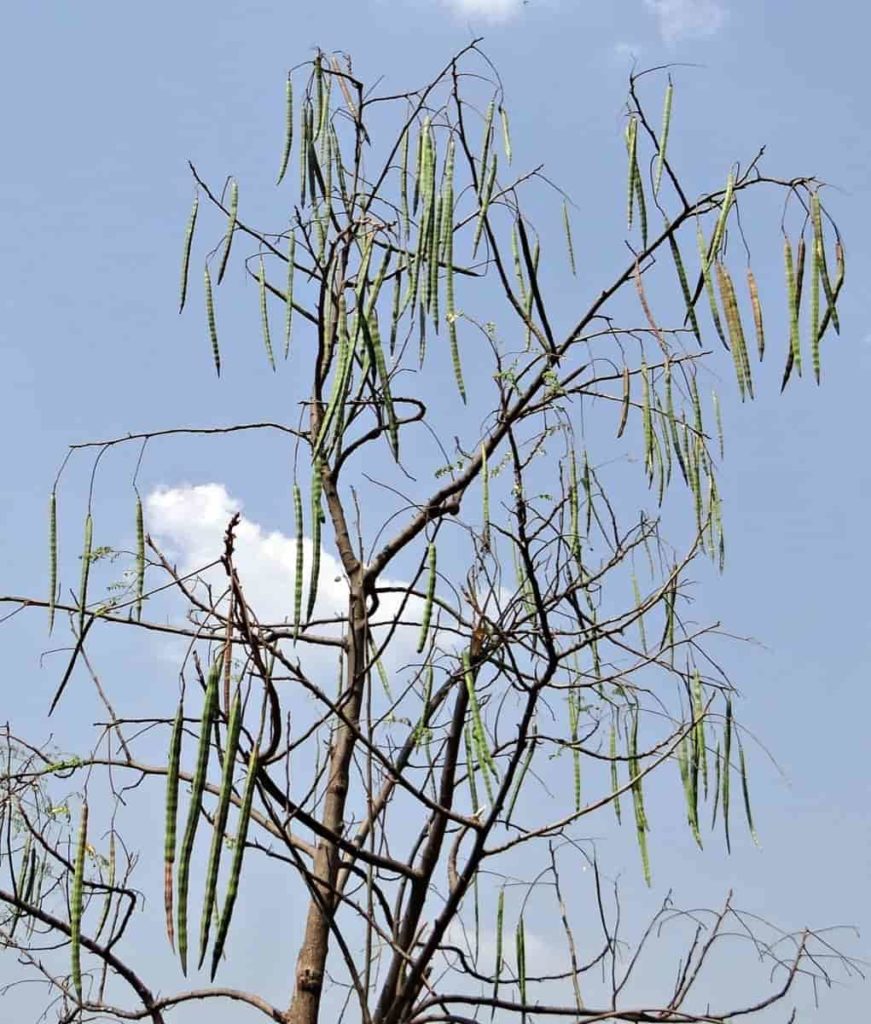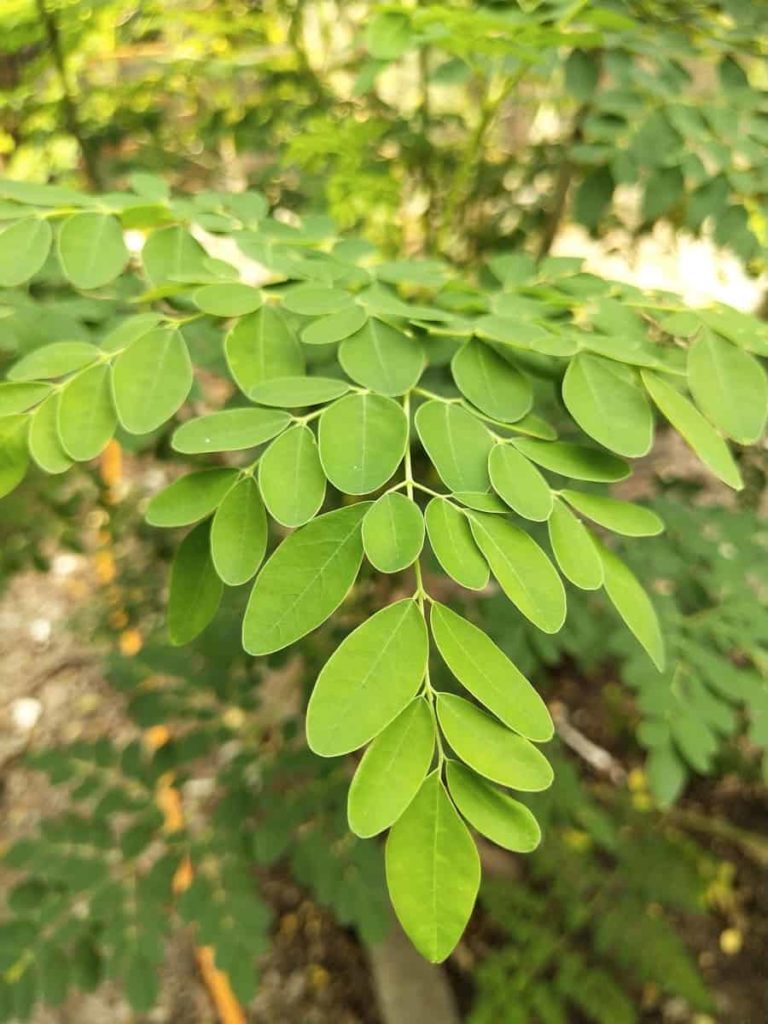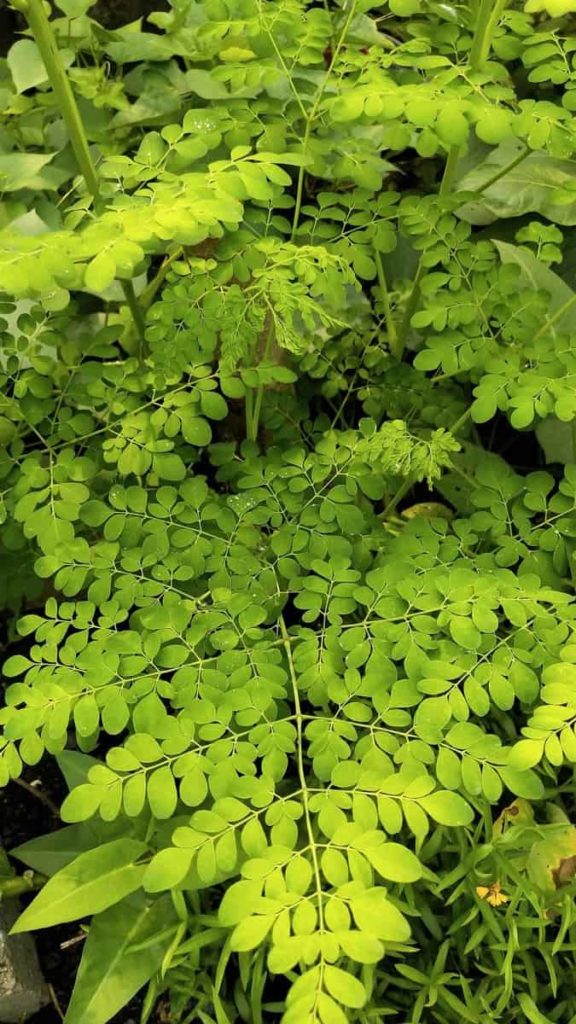Whether you’re looking to decorate your surroundings or add plants to your garden that provide health and nutritional benefits, planting a Moringa tree may be your best decision. Moringa is a fast-growing tree that can easily reach a height of six meters during the first year of its life.
Established Moringa plants require little care and low maintenance, especially if grown outside throughout the year. However, if you do not live in tropical or subtropical climates, moving Moringa plants indoors during cold weather will be necessary. Fortunately, they adapt well to the growing container. Once established, they resist drought and can withstand temperatures up to 48°C.
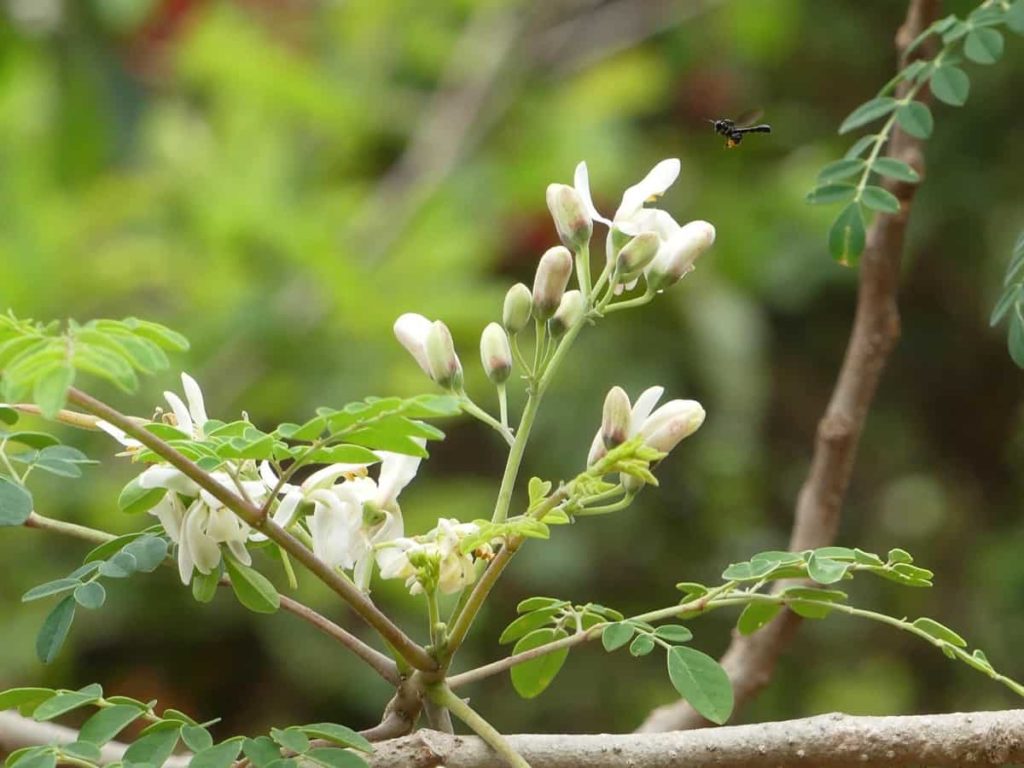
How to grow Moringa/Drumstick from seed to harvest
How long do Drumstick seeds take to grow?
- Place two or three Drumstick seeds in each bag, 1/4 inch deep. Keep moist but not too wet. Drumstick seeds will take a week for the seeds to start sprouting. Make sure the paper towel or cloth is wet; once Drumstick seeds sprout, plant seeds in a 4-inch mud pot with green sprouts on the soil surface. After a month, you can check if the roots of the plants are coming out from under the pot.
- Drumstick seeds would ideally sprout in warm temperatures between 21°C to 32°C. The best way is you should start in small pots, after the seeds start sprouting and transplant them into the ground. Preferably in monsoons, you can transplant month-old seedlings in an open sunny field.
How long before you can harvest Moringa?
- The Moringa fruit can grow up to 18 inches and burst after ripening to expel seeds. Once you plant the Moringa seeds, the Moringa tree can take up to 8 months to fully mature.
- It takes Moringa around eight months to mature and set the seeds. However, if you don’t have so many frost-free days in our climate, you can still grow Moringa. It will only be an annual and not a perennial plant. To grow Moringa as an annual crop, you will prepare the seeds by soaking them overnight.
- When the plant is grown with cutting, the first harvest can occur 6 to 8 months after planting. Often, fruits are not produced in the first year, and yields are usually lower during the first few years.
- Moringa leaves can be harvested when the plant is 150 to 200 centimeters long, taking 3 to 4 months in fertile soil.
How much does a Moringa tree produce?
- One can get 40 to 135 Drumsticks of about 3 to 10 kilograms from a plant. The production and quality of Drumsticks depend on the climate, soil type, irrigation facility, and distance, and market rates depend on the quality and demand in the market.
- Production can be about 50 to 55 tons of pods per hectare (220 beans per tree annually).
When should I start sowing Moringa seeds?
- The best time to sow Moringa seeds is March to May or July to October. Keep the plant hydrated at all times, and cover it with mulch to help it retain moisture.
- Moringa seeds do not have a dormant period and can be planted as soon as they mature, but remember not to plant them during the cold months when the temperature will drop below 16°C.
In case you missed it: How to Prepare the Soil for Moringa Plants: Best Soil Mix, pH, and Compost
Can Moringa be grown from seeds?
- Moringa plants grow easily from seeds. Moringa seeds have no dormancy duration and are best transplanted as soon as they are harvested from the tree. Fresh seeds maintain the best growth rate for a year. Moringa trees also grow rapidly in poor soil and bloom eight months after planting.
- The Moringa tree can be propagated through seeds or cutting. You can cut the branches of an existing tree and place them on the ground. The branches should be about 1 meter long and 4 centimeters in diameter.
- You can sow Moringa seeds directly in the garden, but it is better to start indoors to protect the seedlings from harsh winds, temperatures, or wildlife while growing. Also, soak the seeds in water overnight to accelerate the speed of germination.
How do you prepare Moringa seeds for planting?
- Put your Moringa seeds in a container of water and sit for about 15 minutes. Then if the seeds sink, they are still viable, and if the seeds float, they will not sprout.
- You can apply these plantation guidelines to all varieties of Moringa seeds. One exciting thing about Moringa seeds is that they can be planted directly into the ground from Moringa pods.
- You can sow Moringa seeds directly in the garden, but it is better to start indoors to protect the seedlings from harsh winds, temperatures, or wildlife while growing. You should soak the Moringa seeds in water overnight to speed up the growth.
What is the lifespan of a Moringa tree?
- The average lifespan of Moringa Oliveira is between 30 and 40 years.
- These trees are up to 18 feet long, which makes it difficult to cut them. The solution is to prune or top the trees to a height that makes them much easier to harvest. Pruned Moringa trees lead to shrub-like growth habits in hot, growing months.
What is the best fertilizer for Moringa tree?
- Chicken manure will be the best option to make your plant fertile if growing Moringa outside. For better yield, you to use chicken manure while also adding biochar. If the Moringa plant is planted in a pot, you should add 450 grams of fertilizer for every 5 gallons of soil.
- Moringa trees need fertilizers with 2:1:1 or 3:1:1:1, which is 2 to 3 times more nitrogen than phosphorus and potassium.
- Manure is the most natural fertilizer to use. You should process your fresh manure first as it has high nitrogen levels and it can burn your Moringa plant. Use 450grams to 1kg of manure for every 5 square feet of the garden if your Moringa is planted outside.
- If it is put in the pot, the amount of fertilizer depends on the size of the pot. Generally, start with 450 grams of manure for every 5 gallons of soil (mix it with the soil). This manure/soil mixture can only be added on top of the existing soil, but ensure that the manure does not touch the tree as it can burn it with high amounts of nitrogen.
How long can Moringa seeds last?
- Some people say that the seeds are not viable after three months of harvesting, but Moringa seeds can be kept for the foreseeable future if stored in an air-locked or sealed container in a dry place at normal room temperature.
- Moringa seeds lose their viability and vigor within 6 to 12 months, depending on the conditions in which they are stored. High-quality seeds are essential for most crops, including agroforestry crops such as Moringa.
How can I make Moringa grow faster?
- You should choose an area with light and sandy soil, not heavier than clay or waterlogged. Dig a hole one-foot square and one foot deep. Fill the holes back with loose soil. Compost or manure will help the Moringa tree to grow better, although Moringa trees can grow in the poor.
- Keep the soil of Moringa plants constantly moist, but do not wet it. Moringa plants do not accept wet feet and are susceptible to overwatering. Instead, you should soak the Moringa seeds in water for 24 hours to increase the rate of germination. The next day, you can remove the soaked seeds and place them on a wet paper towel or cotton cloth. Store them in a dark place and put them in a pot.
Does Moringa need full sun?
- Moringa thrives in full sunshine and loves the heat. It works best in tropical, subtropical, and even arid areas. In the southern states, it has a hot shelter with enough sunshine for warmth in winter.
- Moringa grows well in a wide range of environmental conditions. It grows best between 25°C to 35°C but will tolerate up to 48°C in the shade and can avoid light frost. Drought-tolerant trees grow well in areas receiving annual rainfall amounts ranging from 250 to 1500 millimeters.
- Moringa trees love warmth, sunlight, and some water. If your area temperatures drop below 0°C, you can still grow Moringa, but it probably won’t survive unless you take some precautions. If the root freezes, the tree will die.
- Moringa requires at least 6 hours of sunlight daily but prefers full sun conditions throughout the year.
- A bright, sunny spot that receives direct sunlight for most of the day is perfect for Moringa trees. Growth can stop if plants don’t get enough light.
In case you missed it: Moringa Planting and Growing FAQs
Can Drumsticks be grown in pots?
- Drumstick is also one of the plants that can be grown in a container. The Drumstick could be propagated either through seeds or through stem cutting. You can pick the best seeds from fully ripen/mature, dried seed beans and grow your plants from them.
- Using a long and deep pot is better because the Drumstick tree has a deep tap root system, preferably a 20-inch container.
- Moringa grown in pots can be placed in any west or south balcony or area that receives 4-6 hours of direct sunlight daily.
- Moringa, known as the Drumstick plant, thrives well in subtropical or tropical climates. You can grow Moringa indoors in containers when the temperature drops. The ideal temperature to increase this Moringa is 21°C to 35°C. The sun-loving plant doesn’t mind the shade either.
How do you induce Moringa flowering?
- Flowering can be induced by giving light stress, i.e., turning off the water or giving less water; you should do this activity in the second week of September. In the first week of September, 5 to 10 kg of poultry yard manure should be applied to each plant; this PYM generates soil heat and helps the plant to grow.
- The crop has to be sprayed with 0.5% potassium nitrate and 0.5% nitrobenzene chemicals at the rate of two sprays during the 70th and 85th days. The crop will flower 90 to 100 days after sowing. The spray induces the beginning of flowering by forming a bud at the onset of flowering.
Is Epsom salt good for the Moringa plant?
- Epsom salt contains some elements that plants need, but not all of them. Fertilizing with Epsom salts is a good way to promote magnesium to your plants, a factor they need to grow and thrive. It’s an essential nutrient that helps in nutrient composition and overall plant health.
- It promotes plant health and growth. The best fertilizer you can find is Epsom Moringa salt. You can mix this in your soil and see amazing results.
How do you increase the yield of a Drumstick?
- Regular irrigation and excess moisture will prevent the plant from blooming. Drumsticks also do not require large amounts of fertilizers. Make a ring-shaped pit around the tree during the monsoon and fill it with leaves, ash, and organic fertilizers. This will boost production. Apply 15 kg of compost or FYM per pit after mixing with the upper soil.
- You can maintain a distance of 1.0 x 1.0 meters to cultivate Drumstick leaves. Each pit is filled with a well-mixed mixture of soil, 10 to 15 kg of farmyard manure or compost with 100 grams of nitrogen, 200 grams of phosphorus, and 50 grams of potassium before the onset of monsoon.
In case you missed it: Moringa Plantation, Care, Harvesting (Munaga),
Why are my Moringa Leaves turning yellow?
- The Moringa tree leaves may turn yellow due to excessive water or underwatering. The Moringa can turn yellow also due to a lack of sunlight or essential nutrients. The leaves can also turn yellow due to spider-mite infection.
- The rootbound plant shows signs of an underwater plant. The leaves wilt, turning yellow or brown near the bottom of the plant.
- If the problem is severe, the growth of the plant can stop. Therefore, you need to work quickly to transplant your Moringa if it’s rootbound. The Moringa plant leaves pale when it does not get the required sunlight. Moringa plants love direct sun exposure.
- Make sure you’re not putting the plantings directly in the sun. They probably won’t take it. If the plants cannot get enough sunlight, their leaves can turn yellow.
- Yellow spots are seen on the leaves due to nutritional imbalances. This happens when the soil is poor in the required nutrients.
- Plants that lack the required nutrients show the leaves turning yellow. Nitrogen, phosphorus, and potassium are macronutrients.
- You must add Epsom salt, banana peels, and coffee ground to the potting mix. These will easily provide all nutrients to the plant.
How deep are Moringa roots?
- Large branch or stem cutting applied to a depth of about 50 centimeters in moist soil, the root grows easily to sizeable trees within a few months.
- Moringa trees have a deep taproot system, so they need a lot of space to spread their roots in the soil. Therefore, Moringa trees prefer loamy or sandy soils with a neutral pH.
- Moringa has a taproot like Carrots and small feeder roots, but the roots of the branches are not bothersome. Moringas can be grown as hedges or specimen trees. If you choose the container method, ensure the pot is deep enough and use well-draining sandy soil.
How often should I water Moringa seeds?
- Moringa trees require a lot of water in the beginning. Water them daily until the seedlings emerge, when you can start watering them every other day. Once they’re about 18 inches tall, you should be watering them once a week.
- Moringa plants are susceptible to overwatering. Established Moringa plants are drought-tolerant, but young Moringa plants need more constant moisture to encourage vigorous growth. Unusual, deep water is better than abundant light water when watering Moringa plants.
- Moringa trees need a tropical climate, so place them in an area that receives full sun throughout the day. Water your Moringa once a week. Though Moringas are drought tolerant, they should still have water weekly when they are set up. Keep the soil of Moringa plants constantly moist, but do not wet it.
In case you missed it: Growing Moringa Tree from Seeds, Cuttings
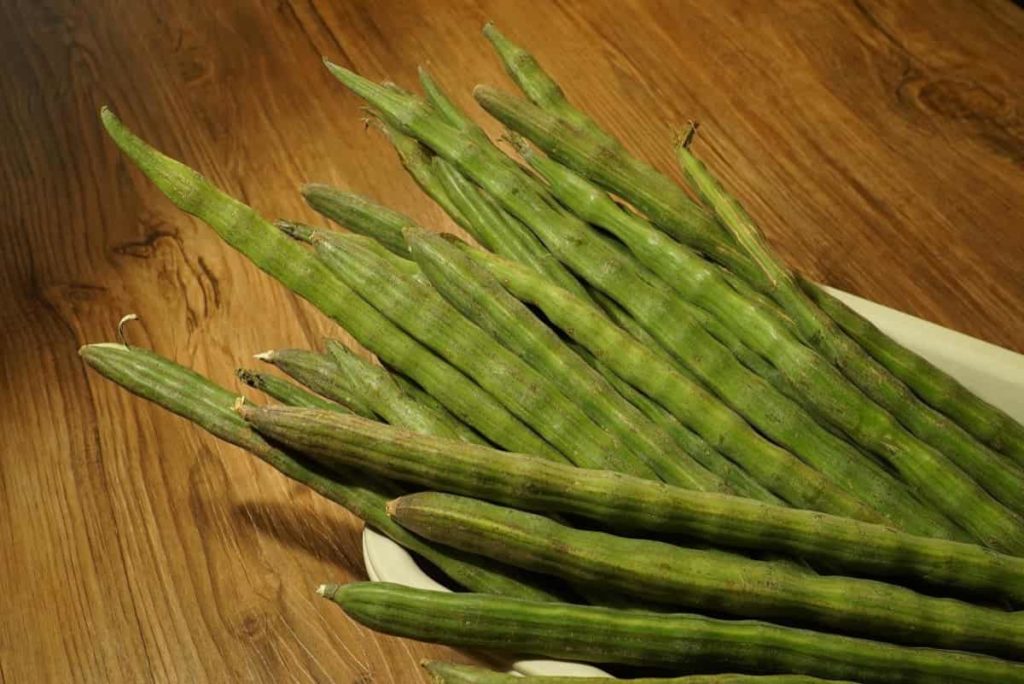
What kind of soil do Moringa trees like?
- Moringa likes well-drained, slightly acidic soil, pH 6.2 to 7. In the garden, loamy soil with lots of extra compost and well-rotted manure is ideal. Plant it on a mound in high rainfall areas to ensure additional water drains away from the roots.
- Moringa prefers well-drained sandy or loam soil with a neutral pH level. Although it tolerates clay, it cannot be waterlogged. Choose a sunny location for the tree. You should plant Moringa seeds an inch deep, or you can cut the branch in a hole at least 1 foot.
- Moringa tolerates various soil conditions but prefers a neutral for slightly acidic, well-drained, sandy, or loamy soils. The roots tend to rot in water-logged soil. Moringa is a sun and heat-loving plant and does not tolerate freezing or frost.
How do you control the flower drop on a Drumstick?
- The Drumstick tree is a crop that has many features. The plant prefers summer and drought. It tries to reduce evaporation by dropping leaves during summer. Its flowers also fall during this phase.
- Monitor temperature fluctuations – The first is to monitor the temperature. Anything above 29°C or less than 12°C will result in a drop of flowers. Create a temperature-controlled shade of plastic or wood for your plants.
- Check soil pH level – Check the pH level of your soil and see if it matches the statement on the back of the seed packet. If you feel your soil is nutrient deficient, add a layer of compost or slow-release fertilizer.
- Keep the soil evenly moist – Also, always ensure the soil is kept evenly moist. It shouldn’t be holding too much water and getting soggy, but it should also not be too dry. Mulch helps organize this process.
- Use of natural pesticides – Finally, when dealing with pests, use environmentally friendly and natural pesticides or pick infected buds before the problem spreads.
How do I get rid of caterpillars on my Moringa tree?
- Handpick large caterpillars during the day as they hide under cracks and the plant. Spray pesticides such as emamectin benzoate 5 SG at 0.25 milliliter per liter of water, Spinosad 45 SC at 0.25 milliliter per liter, or Lambda-cyhalothrin 5EC 1.00 milliliter per liter of water or Chlorpyrifos 20EC on 2 milliliters per liter of water for effective pest management.
- Use light nets to attract and kill adults. Spray carbaryl 1.0 kg or malathion 50EC or endosulfan 1.0 liter in 500 to 750 Litres of water per hectare.
Why won’t my Moringa seeds sprout?
- Excess water can kill young Moringa seeds and trees. Plant your seeds, water them well, then water them again when the soil is almost dry. Sprouting seeds and young seedlings have a higher tendency to rot.
- The main reasons for failed growth are: seeds are eaten – rats, birds, and wireworms all eat seeds. The seeds rot if you plant them too deeply; overwatered or untreated seeds may rot in cold weather.
- Moringa seeds prefer to sprout in the temperature range that ranges from 21°C to 32°C. You should plant seeds when the weather is hot, as they will only thrive in hot sunlight if they can be outdoors. No matter how you plant them, you should always allow good drainage, and their roots will rot in the soggy soil.
What is the best time to prune Moringa tree?
- Let them keep their leaves when the weather drops below 10°C, and prune if they threaten to get out of hand. When the temperature cools down, their growth slows down. They may even lose all their leaves and look like dead sticks.
- Trees should be pruned by about 2 meters in cold weather. Moringa grown in a pot in winter should also be reduced to encourage new growth in spring.
- If you keep pinching the upward growth back and cut the length of the branches in half, your Moringas can stay in their pots and will remain smaller. Organic fertilizer can be applied lightly about once a month to ensure that they get adequate nutrients.
Why is my Moringa plant drooping?
- This is probably a lack of magnesium sulfate. Add an Epsom salt solution to the soil. Fish or kelp fertilizer helps because it contains all the nutrients needed for Moringa. Don’t overwater your Moringa.
- Spider worms suck plant juice and cause leaves to wilt, curl, and eventually turn yellow. Such yellow leaves fall from the plant, and in severe cases, the plant dies. You can hang sticky cards around your Moringa tree to confirm the presence of spire mites.
In case you missed it: How to Grow Tomatoes from Seeds: Starting from Scratch, A Beginners Guide to Indoors, Outdoors, and in Pots
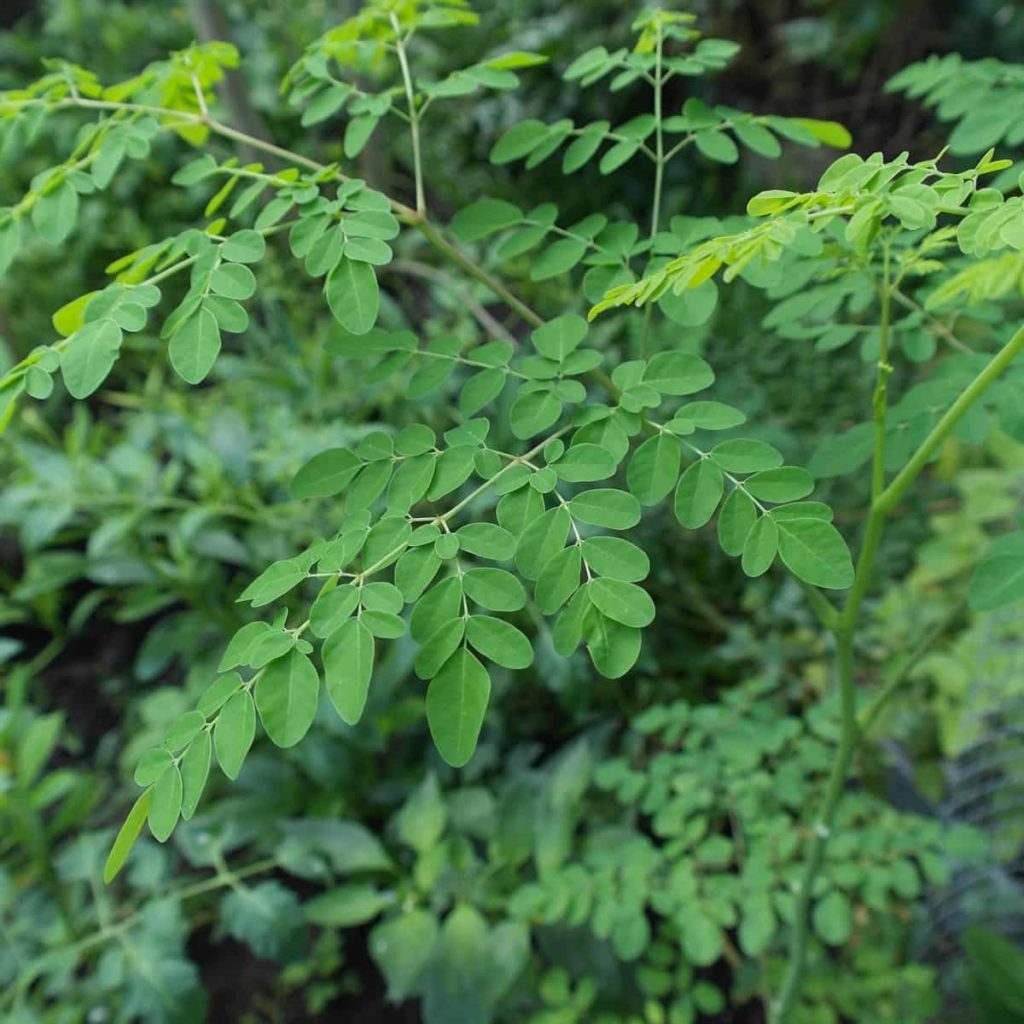
How far apart do you plant Moringa?
Trees should be planted along a distance of 3 meters for good seed production. In addition, trees should be planted closely together if the aim is to maximize leaf production. Moringa can also be used to build live fences or be placed randomly around the property as space permits.
Conclusion
Growing Moringa trees is easier than you think. Whether using Moringa seeds or cutting, trees grow and mature faster. The advantage of growing Moringa in your garden is that it is a low-care plant due to its ability to extract nutrients from different soil types through its well-developed root system. In addition, although new seedlings and cuttings may require regular irrigation for the first season when planted in arid areas, there is little need for water after the plant is established.
- The Role of Watering in Preventing Drying Moringa Pods
- Best Liquid Fertilizer for Flowering Plants
- How to Set Up an Efficient Watering System for Home Garden
- How to Mulch Tulip Bulbs: Expert Tips Best Tulip Blooms
- Common Problems with Potted Figs and How to Solve Them
- How to Prevent Flower Drops in Pomegranate Trees: Effective Tips
- How to Boost Ridge Gourd Flowering and Yield: A Beginner’s Guide
- Effective Pollination Techniques for Maximizing Gourds Yield
- Composting Techniques for Manure in Home Gardens
- A Step-by-Step Guide on Propagation Techniques for Jasmine Plants
- How Do I Make My Garden Less Cluttered: A Beginners Guide
- Growing Red Currants at Home for Beginners
- Gardening Techniques in Planting Vegetables
- Where to Place Indoor Plants in Your Home
- How to Grow Tomatoes Organically at Home: A Comprehensive Guide
- Organic Gardening on a Budget: Low-Cost Methods and Materials
- Gongura Seed Germination and Planting Methods
- Cabbage Seed Germination and Selection
- Broccoli Seed Germination and Selection
- Asparagus Seed Germination and Variety Selection
- Seasonal Flower Gardening: Best Practices for Spring, Summer, Fall, and Winter
- How to Grow Hibiscus from Flower
- Plantation Ideas for Home Decoration: A Beginners Guide
- Flower Garden Designs and Layouts for Beginners
- Planting and Spacing Techniques in Papaya: A Beginner’s Guide
- Growing Gold: Essential Techniques for Planting Pineapples
- How to Make Kalanchoe Plant Bushy: Home Remedies and Solutions
- 11 Reasons Why Your Gardenia is Not Blooming: Home Remedies and Solutions
- Eco Elegance: The Guide to Designing a Drought-Tolerant Landscape
- Gardening on a Slope: Strategies for Hillside Landscaping
- Nourish and Flourish: Top Organic Mulches for Thriving House Plants
- Everything You Want to Know about Indian Mogra Flower: Discover Uses and Growing
- Green Thumb Success: Expert Tips for Cultivating Greenhouse Pumpkins All Year Round
- Maximize Growth & Flavor: The Ultimate Guide to Companion Planting in Herb Gardens
- How to Control Rhododendron Problems Naturally: Home Remedies and Organic Ways to Fix Them
- Natural Magic: The Remarkable Benefits of Cinnamon for Plants
